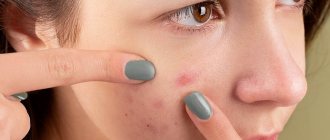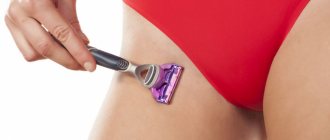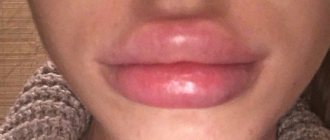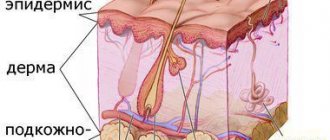The Center for Maxillofacial Surgery and Implantology has created excellent conditions for effective diagnosis and removal of any benign tumors on the face.
Our highly qualified surgeons specialize in operations of any complexity, have extensive experience and master the most modern techniques for removing tumors, such as lipoma.
Varieties of wen
In medicine, a wen is called a lipoma. This benign formation, which consists of fat cells, affects the surface of the skin. Externally, lipomas are dense tubercles of a yellowish or white hue. Single specimens do not cause concern to humans (except for the aesthetic side). If there are a lot of them on the face, they can cause pain.
Wen can form on the neck, around the eyes, on the chin, near the lips, on the nose, on the ear.
There are many types of lipomas. However, the main ones, most often found on the face, are xanthelasma and milia (millet).
Xanthelasmas are soft, yellowish formations. Their basis is sebum. They can have different sizes and arbitrary shapes. Mostly they pop out on the eyelids. They are mainly concerned about women over 50 years of age. Capable of growing, connecting with neighboring formations.
Milia are small white nodules that protrude above the epidermis. They are formed from horny particles and subcutaneous fat. Can be observed in both adults and infants. In most cases, the skin on the cheeks, chin, and wings of the nose is affected. There are both single and multiple rashes.
They do not cause discomfort and are classified as a cosmetic defect.
Cost of removing lipomas (fat) with laser
| Laser tumor removal | Prices, rub. |
| Laser removal of papillomas, single warts - Cat. I. difficulties | 1200 |
| Laser removal of papillomas, multiple warts - Cat. I. difficulties | 350 |
| Laser removal of moles, papillomas, warts - Cat. II. difficulties | 700 |
| Laser removal of moles, papillomas, warts - Cat. III. difficulties | 1500 |
| Laser removal of moles, papillomas, warts - IV category. difficulties | 3000 |
| Laser removal of moles, papillomas, warts - Cat. V. difficulties | 4500 |
| Laser removal of moles, papillomas, warts - Cat. VI. difficulties | 6100 |
| CO2 Laser callus removal (per unit) | 6100 |
| Removal of atheroma, lipoma, fibroma, xanthelasma with laser - Cat. I. difficulties | 6 900 |
| Removal of atheroma, basal cell carcinoma, lipoma, fibroma, xanthelasma with laser - Category II. difficulties | 9 400 |
| Removal of atheroma, basal cell carcinoma, lipoma, fibroma, xanthelasma with laser - Cat. III. difficulties | 16 900 |
| Removal of atheroma, basal cell carcinoma, lipoma, fibroma, xanthelasma with laser - IV category. difficulties | 22 400 |
| Removal of atheroma, basal cell carcinoma, lipoma, fibroma, xanthelasma with laser - Cat. V. difficulties | 33 400 |
Sign up for laser removal of fatty deposits on the face
- Full name
- Telephone
Causes of lipomas
The true causes of rashes are not fully understood. They are formed in males and females of different ages.
However, there is an assumption that wen is formed due to the impact on fat metabolism of factors such as:
- High levels of cholesterol in the blood or lipid metabolism problems. Excess cholesterol makes subcutaneous fat more viscous, which leads to blockage of the sebaceous ducts and accumulation of fat in the epidermis.
- Genetic predisposition. In the human body, from birth, uncharacteristic fat cells are formed, which contribute to the further appearance of lipomas. Transmission of the corresponding gene occurs according to the autosomal dominant type.
- Disruptions in the endocrine system. Hormonal imbalances contribute to the accumulation of subcutaneous fat in different parts of the body.
- Kidney and liver diseases. These organs are responsible for hematopoiesis, removal of toxins and excess water. Failures in their activity can lead to the formation of lipomas.
- Aggressive exposure to ultraviolet rays for a long time.
- Menopause, diabetes, gastrointestinal diseases.
- Neglect of personal hygiene rules.
- Bad habits (drinking alcohol, fatty and sweet foods).
People with combination and oily skin types are at risk.
In 50% of cases, a sharp increase in lipomas on the face signals a weakened immune system and the presence of chronic illnesses. Improper facial care, in addition to lipomas, can provoke the formation of acne. This factor accounts for 25% of cases.
Why choose laser removal?
There are many reasons:
- After laser treatment, the wen disappears without a trace. There will be no small wounds left, and you won’t have to hide your face.
- No risks are expected. The wen simply “melts.” The surgical method is much riskier.
- After removal, you can go to work, apply makeup, swim - in a word, lead a normal life. There is no and cannot be a rehabilitation period.
- It is cheap. The laser method cannot be expensive. The price is determined by the cost and speed of the procedure, and this is truly the cheapest and fastest way to remove fatty tissue, no matter how much they try to make money on it.
Diagnosis and treatment of lipomas
To find out the cause of the formation of wen, it is recommended to consult a specialist.
The therapist collects the necessary information, after which, together with the dermatologist and surgeon, a visual examination of the patient is carried out.
Next, the formations are palpated, and if necessary (suspicion of a malignant nature), a histological examination is prescribed, which involves taking tissue for a biopsy.
Additionally, specialists may recommend ultrasound, MRI, CT, etc. It is important to distinguish lipomas from conditions such as lymphadenitis, hygroma, atheroma, etc. Only after this the doctor determines the tactics for further action.
Treatment methods for lipomas are varied:
- Medication. It involves the use of creams and ointments that help soften the tissues of the epidermis, as well as improve blood circulation. The advantage of this option is that when using local drugs, the likelihood of side effects is minimal. However, it is worth keeping in mind that the result will only be for small-sized wen (no more than 3 cm).
- Surgical intervention. Microsurgery can be performed using either local or general anesthesia. It depends on the location of lipomas. This technique is used in the case of tumors whose size exceeds 3 cm. It is important that after the operation, relapse in this area is excluded.
- Laser. Before the laser procedure, a tissue biopsy must be performed. The removal process is quick. After it there are almost no scars left. In addition, re-growth of wen is excluded.
- Electrocoagulation. Performed under local anesthesia. No regrowth is observed after this procedure.
- Puncture-aspiration method. This option is suitable for combating incompletely formed lipomas, when it is possible to suck out the fat with a needle without damaging the skin. It is painless, but has a significant drawback: there is a high probability of new lipomas forming in place of the removed ones. In addition, the devastated area of skin sags, which does not look very aesthetically pleasing.
- Chemical peeling. The ducts are deeply cleansed of sebaceous plugs. Relapses are excluded.
Wen on the body: reasons, how to get rid of it
A small growth on the skin, a pea-sized “nodule”, can cause anxiety and concern. Concerns increase if the formation begins to gradually increase in size. The specialist’s diagnosis of lipoma only adds fuel to the fire of worry, since it is very similar to the name of many dangerous malignant tumors.
In fact, there is no real reason for concern, since wen extremely rarely (almost never) degenerates into a malignant neoplasm. This is a benign tumor that is characterized by slow growth or stable size over a long period of time. Why wen appears on the body and how to deal with them, you will learn from the publication presented to your attention.
What is a wen?
Wen is an unofficial, “folk” name for a subcutaneous formation formed by adipose tissue. In official medicine, the scientific term “lipoma” is used, which reflects the histological composition of the tumor.
Lipoma is a benign tumor that remains as such throughout its existence. A wen on the body is not characterized by malignant degeneration. From this point of view, it does not pose a health threat. The problem is mainly of an aesthetic nature, especially if the tumor is located on an open area of the body - on the face, on the neck, on the skin of the distal parts of the arms.
A distinctive feature of any benign tumor is that it is formed from cells surrounded by a fibrous capsule. In this way, wen on the body differs from atheroma - another neoplasm, the appearance of which is caused by fat. Atheroma is an accumulation of sebum secreted by the sebaceous glands. Atheroma is formed due to blockage of the ducts of the sebaceous glands. The secretion of the gland cannot come out, accumulates under the skin and manifests itself in the form of a small or medium-sized formation that rises above the skin.
Lipoma, unlike atheroma, does not consist of the secretion of the sebaceous glands, but of fat cells surrounded by a capsule of connective tissue. A skin formation appears as a result of abnormally active division and growth of adipocytes. All cells, regardless of the size of the wen, remain differentiated, that is, they retain their typical characteristics, which makes it easy to distinguish a lipoma from a malignant tumor. A cancer tumor is characterized by impaired differentiation and atypical cell structure. In the case of lipoma, these signs of malignancy are not present.
Lipoma is a benign tumor of adipose tissue, which consists of differentiated adipocytes surrounded by a fibrous capsule. Malignant degeneration is not typical for wen on the body; they do not pose a danger to health or life.
Reasons for the appearance of wen
Numerous studies devoted to the problem discussed in the publication have not made it possible to establish a single cause of lipomas. Currently, it is generally accepted that a wen on the body appears as a result of the combined action of a number of predisposing factors, among which endogenous causes predominate.
Among the risk factors, the most important role is played by metabolic disorders associated with enzymatic deficiency. Particularly dangerous in this regard are disorders affecting the biochemical mechanisms of lipid and carbohydrate metabolism. The cause of lipoma can be hormonal disorders not related to the pathology of the endocrine system. In particular, in women, a neoplasm can appear during pregnancy, lactation or after the end of the lactation period.
Endocrine diseases are also among the risk factors. If a person has wen on the body, the reasons should be sought in the functioning of the hormonal system. Dysfunction of the pituitary, adrenal, thyroid (hypothyroidism) or pancreas (diabetes) may be the root of the problem. A risk factor is an imbalance in the secretion of sex hormones, which is important for women taking oral contraceptives and athletes using pharmacological agents to accelerate results.
A fatty deposit on the body can occur even against the background of complete well-being, that is, in the absence of any endocrine disorders, hormonal changes or metabolic problems. Doctors explain this by genetic predisposition: people whose relatives have encountered a similar problem have a higher risk of developing lipoma. Hereditary, or familial, lipomatosis is characterized by the appearance of multiple wen at a young age.
Among exogenous factors, nutrition is of greatest importance. The risk of lipoma is higher if a person's diet is dominated by simple carbohydrates (sugar, confectionery, flour), as well as saturated and hydrogenated fats. A risk factor is systematic alcohol consumption. All these substances interfere with the natural course of metabolic processes, which is fraught with the formation of a benign tumor of adipose tissue.
Another possible cause of the appearance of a wen on the body is mechanical trauma, which leads to neurotrophic disorders in the integumentary tissues. They, in turn, can provoke the proliferation of subcutaneous fat cells. It is possible that exposure to ultraviolet radiation on the skin plays a certain role, but the connection between this factor and the appearance of lipomas has not been proven.
Localization, appearance, symptoms
The concept of “typical localization” does not apply to wen on the body. The tumor can appear on any part of the body: on the back of the foot or hand, on the shoulder or forearm, on the back, on the chest, on the face or on the abdomen. In short, lipoma does not have a “favorite” location; the tumor can appear anywhere.
As for the symptoms, that is, the appearance of the tumor, there is more certainty. Externally, the lipoma looks like a pea; it is characterized by a rounded shape with regular and even edges. On palpation, the adipose tissue tumor is soft or moderately dense. The surface is smooth. The color can be flesh-colored, reddish or brownish, depending on how abundantly blood vessels grow into the tumor.
An important diagnostic criterion is the mobility of the tumor. The subcutaneous wen on the body is always mobile; it is not fused to deeper tissues and moves freely with the skin. This symptom makes it easy to distinguish a lipoma from a malignant tumor. The latter grows into deep tissues, which is why it becomes immobile.
Size is difficult to use as a diagnostic criterion because it can vary over a wide range. Typically, a fatty tissue tumor has a diameter of 0.5 to 1 cm, but there may be exceptions to this rule. Wen on the body can reach 2-3 cm in diameter. There are cases when, as a result of growth, a lipoma reached gigantic sizes - more than 10 cm in diameter.
The last symptom - pain - is not typical for wen. As a rule, education does not remind us of itself. The exception is situations when a person mechanically injures him. When struck, scratched or pinched, a sharp pain may occur, which is not too intense and passes quickly. However, if a tumor of adipose tissue puts pressure on superficial vessels and nerves, the clinical picture may include moderate or even severe pain.
Are wen dangerous?
As already mentioned, the prognosis for this benign tumor is extremely favorable. The neoplasm is not characterized by malignant degeneration, so nothing threatens life. However, this does not mean that you can forget about lipoma, since certain health risks are still present.
In case of mechanical damage (cut, pinching, blow) inflammatory processes may begin in the depths of the formation. If the integrity of the skin is damaged, there is a risk of infection in the wound. The result of this may be the development of a necrotic or purulent-inflammatory process, after treatment of which visible scars will remain on the skin.
Scars can also form after removal of a large tumor. A small lipoma can be removed without leaving a trace, so that there are no noticeable scars left on the skin. When removing large and giant wen, it is difficult to avoid scar changes. Meanwhile, large wen must be removed, since sooner or later they will begin to put pressure on the nerves and blood vessels. It follows from this that it is better to get rid of the wen at an early stage, before it grows to a large size, the only question is how to do this?
How to get rid of wen?
Many people, in an attempt to get rid of the tumor, resort to traditional medicine recipes. Numerous publications devoted to this problem offer various remedies: compresses made from onions, garlic or sprouted wheat, applications of celandine and other medicinal herbs. Unfortunately, such an approach is doomed to failure; it is not possible to get rid of education using folk remedies. Traditional recipes are unlikely to provoke the growth of a lipoma, but they certainly will not lead to a reduction in its size.
Official medicine offers two options for solving the problem. You can get rid of small lipomas using a minimally invasive procedure, which involves injecting a special solution deep into the formation that destroys adipocytes. The disadvantage of this method is that there is a high risk of relapse, the capsule is not removed, and the method can only be used for small (up to 2-3 cm) tumor sizes.
Surgical removal of a wen on the body is an effective and universal treatment method. The lipoma is removed along with the surrounding capsule. Minor surgery is performed using a traditional, radio wave or laser scalpel. Accordingly, traditional surgical, radio wave and laser removal are distinguished.
All methods of surgical treatment are effective, but from an aesthetic point of view they are not equivalent. After traditional surgical removal of a tumor, small scars often remain, even if the doctor removes a small tumor. Radio wave surgery allows you to minimize the severity of scars, and the laser method makes it possible to perform the operation absolutely without leaving a trace.
Laser lipoma removal has many benefits. The laser knife seals the vessels immediately after they are damaged, reduces bleeding, and injures the skin to a lesser extent. Since laser pulses have a detrimental effect on pathogenic and opportunistic microflora, there is no risk of infectious complications. In addition, the laser stimulates regeneration, which shortens the recovery period, accelerates skin healing and avoids scar formation.
The problem is that the laser method is used only for medium-sized and small-sized wen; large and gigantic ones (more than 10 cm in diameter) are forced to be removed by the doctor using the traditional surgical method. Given their size, it is almost impossible to avoid scar formation.
Since the aesthetic component of the operation is a concern for all patients, doctors recommend removing lipomas in the early stages. The deciding factor is the size of the education. A tumor on the face can be removed without a trace if its diameter does not exceed 1 centimeter. Wen on the body are removed without scarring if their size is no more than 2.5-3 cm.
Laser removal of wen is the most effective and safe method. It is better to remove lipomas in the early stages, when their size does not exceed 1 cm if localized on the face or 3 cm if localized on the body.
The operation is performed on an outpatient basis under local anesthesia; only giant lipomas require the use of general anesthesia (anesthesia). The patient returns home on the day of surgery. During the recovery period, it is necessary to protect the skin from ultraviolet rays and avoid exposure to high or low temperatures. It is advisable not to wet the wound with water and regularly treat it with antiseptic solutions.
Removal of fatty tissues on the body: price
Surgeries to remove fatty tissue are carried out in aesthetic medicine and plastic surgery clinics. It is advisable to contact a medical institution equipped with modern equipment for laser manipulation.
The price of removing wen with a laser is low.
The exact cost depends on the size of the education. The cost of removing a small lipoma (up to 3 cm) in Moscow clinics is about 5 thousand rubles. The cost of treating a tumor up to 10 cm in size increases to 8-9 thousand rubles. Treatment of large and giant lipomas costs more - up to 15 thousand rubles, depending on the size of the formation and the category of complexity of the operation. You will receive more detailed information about lipoma removal methods during a consultation with a doctor at the Galaktika aesthetic medicine clinic (Moscow)
Prevention
You can reduce the risk of developing wen if you adhere to certain points:
- giving up bad habits;
- maintaining a healthy diet;
- regular hygiene;
- use of exclusively high-quality cosmetics;
- periodic examinations by a dermatologist.
If the precautions still prove to be insufficient and wen forms, you need to seek professional help from a specialist. You cannot pierce or squeeze out lipomas yourself, as this can lead to blood poisoning (due to infection), scars, etc. Only a doctor can determine the nature of the tumor and, if necessary, prescribe treatment.
Our specialists
- Kiani Ali
Candidate of Medical Sciences, laser medicine specialist, dermatocosmetologist.
Sign up
- Stepanova Inna Igorevna
Candidate of Medical Sciences, maxillofacial surgeon, specialist in laser medicine.
Sign up
- Fedotova Marina Andreevna
Surgeon, dermatocosmetologist, laser medicine specialist
Sign up
- Popovkin Pavel Sergeevich
Surgeon, oncologist, laser medicine specialist.
Sign up
Expert opinion
- Cosmetologist
- Surgeon
Michelle Ellern
practicing cosmetologist-dermatologist
When deciding to remove lipomas with a laser, it is advisable to choose a medical institution where such operations are performed by professional surgeons. To do this, a statistical analysis is carried out on available reviews on the Internet and other resources. It is better if these are recommendations from friends who have already used the services of a particular clinic. Cost plays a role, but not the key one – health is more important.
Theda Contis
plastic surgeon
White fatty formations on the epidermis of the face (with the exception of the eye area) can be carefully removed by yourself by piercing with a needle and squeezing out. Only for this purpose certain safety measures are followed - the instrument, the place of planned manipulations and hands are thoroughly disinfected with alcohol. After removing the contents, be sure to treat the wound with an antiseptic.
Wen causes aesthetic discomfort, especially on the face. As a result, a person may begin to develop complexes. You shouldn’t put up with this, because there is more than one option for removing a wen.
Reviews
The topic can be summarized with reviews from people who have encountered the problem discussed and successfully dealt with it.
SVETLANA, 33 YEARS OLD:
“When I noticed a small scattering of small white growths near my eyes, I was very upset.
Knowing that it was dangerous to touch them yourself, I decided to undergo laser intervention. After consultation with a specialist and passing the relevant tests, the procedure was carried out.
Everything went quickly and successfully - the method is truly effective and safe.”
OLGA, 34 YEARS OLD:
“Once I discovered a small pimple on my forehead that did not heal for a long time.
I was afraid to do anything with it on my own and turned to a surgeon for advice. It turned out that it was a wen. Recommendations for laser therapy were given.
The operation took place under local anesthesia and lasted literally a quarter of an hour. As a result, not even a trace was left on the skin.”
Alternative methods to combat wen
It is quite possible to remove small white fatty bulges on the facial surface with the help of certain pharmaceutical preparations.
Here is a list of the most productive:
| Name | Characteristic | Application | Photo |
| Vishnevsky ointment | The main active ingredients in the composition are birch tar and xeroform. The product is produced in tubes of 30 and 50 g. The composition does not emit a particularly pleasant smell. | Apply ointment to problem areas, and fix a gauze pad on top. Renew the bandage every 10 hours for 3-4 days. Then follows a two-day break and repeat the course. | |
| Ichthyol ointment | The product is endowed with regenerating and absorbable properties. | Wen is treated locally 2-3 times a day. | |
| Red cosmetic clay | The product is sold in the form of a brown powder. | Prepare the mask: dilute the loose base with water until a paste is obtained. Apply it to skin defects. Leave until the mixture dries completely, then wash off with a damp cloth. | |
| Badyaga | Sold in the form of: ointment, gel, cream, powder. A completely natural product based on a natural substance - badyagi, which works like a sponge (pulls out harmful environments). It is purposefully used in the treatment of various formations and lesions on the epidermis. | Use according to the attached instructions. |
TOP 10 folk methods
If lipomas are small in size, there is a chance to cope with them without radical methods - with folk remedies at home.
But it would be a good idea to first consult a dermatologist so as not to cause harm to your health.
Common means are presented below:
- Golden mustache. Apply the freshly picked leaf for at least 10 hours. If necessary, the procedure is repeated in subsequent days.
- Garlic. Grind garlic (1 clove), mix with vegetable oil (30 ml). Rub daily until the wen disappears.
- Egg films. Remove the films from the inside of the chicken egg shell and apply them to the white tubercles. As soon as redness and swelling appears, remove. This is done again only after the inflammation has passed.
- Celandine. You can buy ready-made celandine juice at the pharmacy or squeeze it out of the plant. Lubricate the wen and wash it off after 25-30 minutes. After a few days of such manipulations, a hole appears in the wen. Then Vishnevsky ointment is applied - the bandage is not removed for about an hour.
- Onion. First, bake the onion head in the oven until soft. Grind it into a paste and combine it with shavings of laundry soap (1 tsp). This ointment is used to lubricate problem areas twice a day.
- Honey and sour cream mixture. Combine honey, table salt and sour cream - all in equal parts. Apply the composition to the steamed skin and wait 15-20 minutes. Afterwards, wash it off.
- Aloe or Kalanchoe. Juice is squeezed out of plant leaves and used in the form of compresses.
- Nettle. An alcohol tincture is made from 500 ml of vodka and 60 g of nettle raw materials. Infuse for 20-22 days in a dark and cool place. Apply as needed - externally.
- Lamb fat. The product is first heated in a steam bath, cooled and the wen is lubricated. The same is done every day for a month.
- Chestnuts. Twist chestnuts (4-5 pieces) through a meat grinder and add 15 g of natural honey. Apply the mixture 3-4 times a day.










